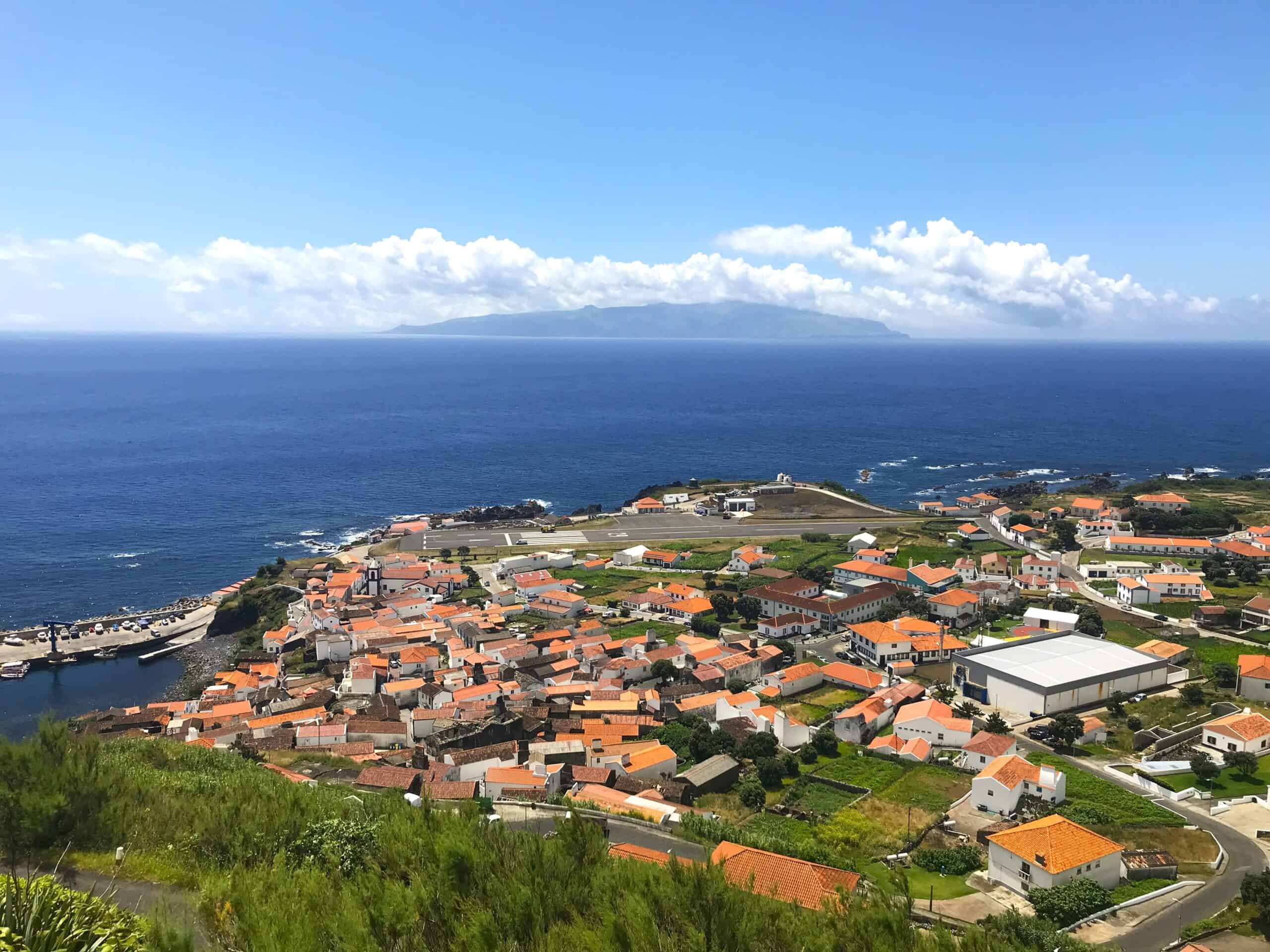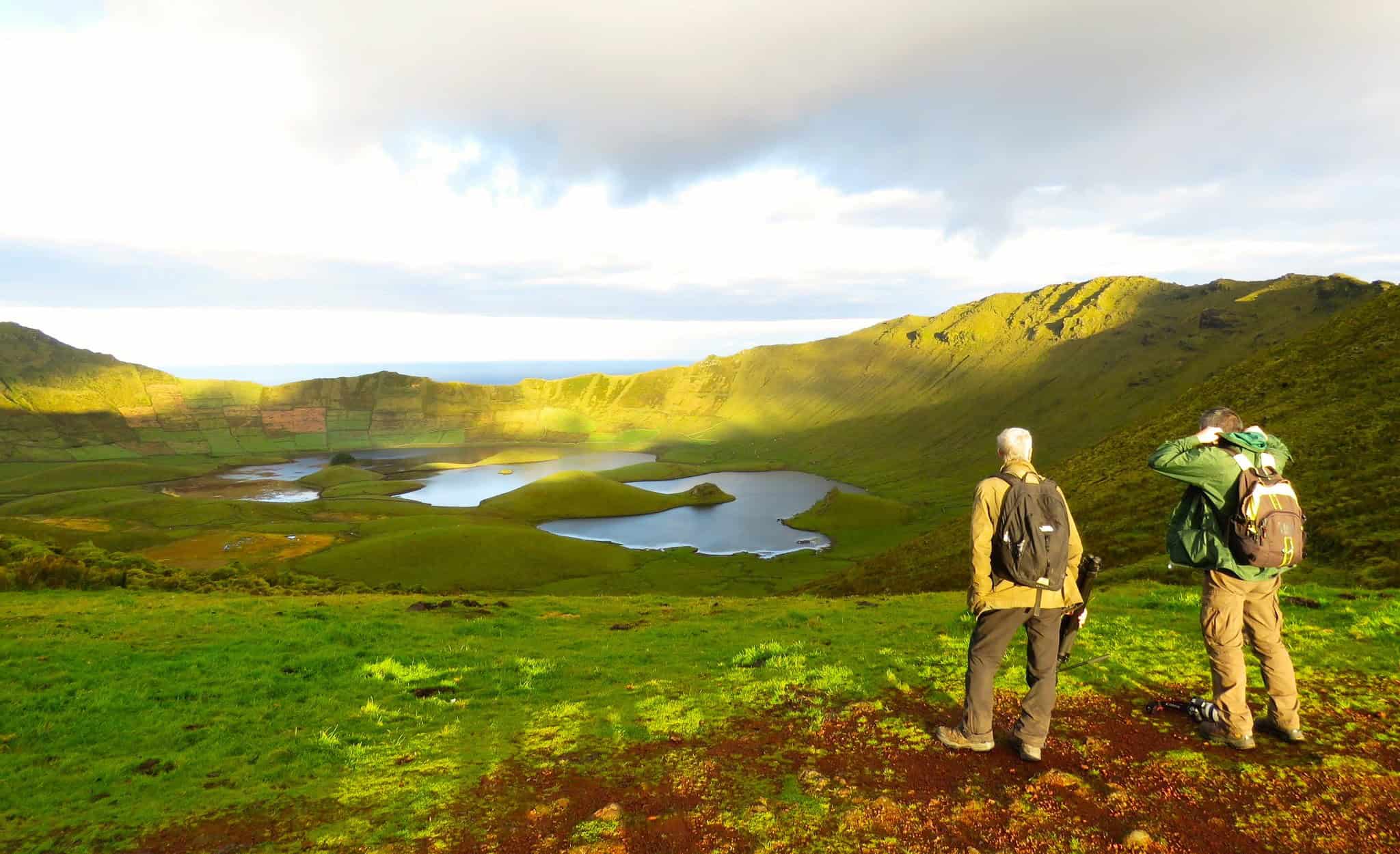Tiny Corvo is the most northerly island of the Azores.
 Corvo is the smallest of all the islands in the Azores, with just one town, Vila do Corvo, and a population of around 450. Being the most westerly, Corvo was one of the last islands to be populated in 1580, although it had appeared on navigational charts under various names as early as 1351. In the 16th and 17th centuries, Corvo and neighbour Flores were vital navigation beacons for ships sailing the trade winds between mainland Portugal and her Brazilian colonies, but the islands quickly lost their significance when the industrial revolution and steam-driven ships transformed Atlantic navigation. The southern end of the island around Vila is fairly flat, whereas the sheer cliffs of the north, east and west coasts all give way to the vast volcanic crater which dominates the island.
Corvo is the smallest of all the islands in the Azores, with just one town, Vila do Corvo, and a population of around 450. Being the most westerly, Corvo was one of the last islands to be populated in 1580, although it had appeared on navigational charts under various names as early as 1351. In the 16th and 17th centuries, Corvo and neighbour Flores were vital navigation beacons for ships sailing the trade winds between mainland Portugal and her Brazilian colonies, but the islands quickly lost their significance when the industrial revolution and steam-driven ships transformed Atlantic navigation. The southern end of the island around Vila is fairly flat, whereas the sheer cliffs of the north, east and west coasts all give way to the vast volcanic crater which dominates the island.
 Thankfully, life on modern-day Corvo is a more sedate affair. Together with Flores and Graciosa, the island is a UNESCO Biosphere Reserve – acknowledging the careful preservation of her volcanic landscape in tandem with sustainable human development. It’s also a popular destination for the birdwatching community, when migrating American bird species seek refuge on the island in the Autumn.
Thankfully, life on modern-day Corvo is a more sedate affair. Together with Flores and Graciosa, the island is a UNESCO Biosphere Reserve – acknowledging the careful preservation of her volcanic landscape in tandem with sustainable human development. It’s also a popular destination for the birdwatching community, when migrating American bird species seek refuge on the island in the Autumn.










Follow us online